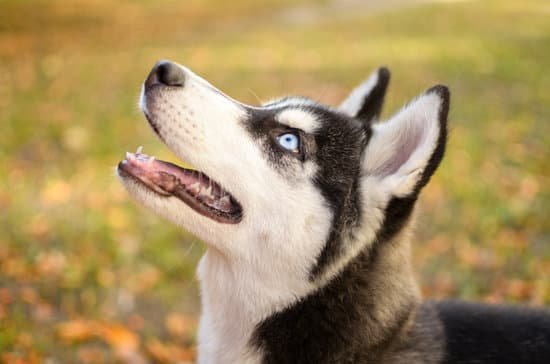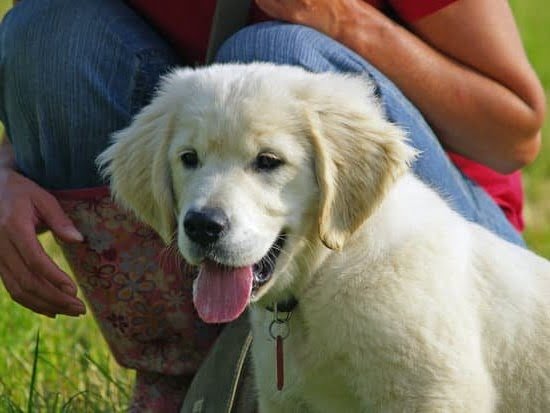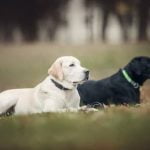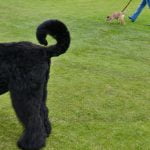When it comes to owning a dog, proper training is crucial for their safety and the well-being of others. One aspect of training that should not be overlooked is teaching your furry friend to not play rough. This article will provide you with essential tips and techniques on how to accomplish this goal effectively.
Playing rough may seem harmless at first, but it can have negative consequences. Dogs who engage in rough play may unknowingly harm themselves or others, causing injuries that could have been easily avoided. It is essential to establish clear rules and boundaries for your dog’s playtime to ensure everyone involved stays safe.
Consistency is key when it comes to training your dog to not play rough. Dogs rely on consistent cues and reinforcement to understand what behaviors are acceptable. By consistently reinforcing gentle play behavior, you can help your dog understand the appropriate ways to interact during playtime.
In this article, we will explore positive reinforcement techniques and how they can be used effectively to encourage proper play behavior. We will also discuss redirecting energy towards appropriate activities and the importance of socializing with other dogs who exhibit well-behaved play manners.
By understanding the importance of training your dog to not play rough from the outset, you are setting both yourself and your four-legged companion up for success in a safe and enjoyable relationship. So let’s delve into the following sections for practical tips and guidance on achieving this goal.
The Negative Consequences of Rough Play
Rough play between dogs may seem harmless and even entertaining, but it can actually lead to negative consequences for both the dogs involved and their owners. Understanding the risks and potential harm caused by dogs playing rough is essential for any dog owner who wants to train their dog to engage in gentle play.
One of the primary risks of rough play is the potential for injury. When dogs engage in rough play, they may bite or scratch each other aggressively, causing wounds that can become infected or require medical attention. Additionally, excessive force or rough movements can lead to sprains, strains, or even fractures. Not only can these injuries be painful for your furry friend, but they may also result in expensive veterinary bills.
Another consequence of rough play is behavioral issues. Dogs that regularly engage in rough play may become more aggressive towards other dogs or humans over time. This aggression can make it difficult for them to socialize with other animals or people safely. Additionally, rough play can teach a dog that it is acceptable to use force or dominance when interacting with others, which can lead to further behavioral problems down the line.
To avoid these negative consequences, setting clear boundaries for your dog’s playtime is crucial. Establish rules about appropriate levels of force and monitor your dog’s interactions with other dogs closely. Encourage gentle play by redirecting your dog’s energy towards appropriate activities and providing them with appropriate toys that promote gentle behavior. By consistently reinforcing proper play behavior and discouraging rough play, you can ensure a safe and enjoyable experience for both your pet and those around them.
Setting Boundaries
When it comes to training your dog to not play rough, setting clear rules and boundaries is essential. By establishing these guidelines, you will be able to create a safe and enjoyable play environment for both you and your furry friend. Here are some steps you can take to set boundaries during playtime:
- Determine the acceptable behaviors: Start by identifying the specific behaviors that are considered rough play and should be discouraged. This may include biting, excessive jumping, or aggressive body language. Make a list of these behaviors so that you have a clear understanding of what needs to be addressed.
- Consistently enforce the rules: Once you have established the acceptable behaviors, it is important to consistently enforce the rules during playtime. If your dog starts displaying any rough behavior, immediately interrupt the play session and calmly redirect their attention towards appropriate activities or toys.
- Use verbal commands and cues: Teach your dog specific verbal commands or cues that signify when their play behavior is becoming too rough. For example, you can use phrases like “gentle” or “easy.” Start by using these commands during calm moments of play, gradually introducing them into more intense situations. Over time, your dog will associate these cues with adjusting their behavior accordingly.
To reinforce the importance of setting boundaries during playtime, consider utilizing positive reinforcement techniques:
- Reward good behavior: Whenever your dog exhibits gentle playing behavior, reward them with treats, praise, or even a favorite toy. This positive reinforcement will help them understand which behaviors are desirable.
- Ignore undesirable behavior: On the other hand, if your dog starts playing roughly or exhibiting unwanted behaviors, ignore them temporarily by turning away or withdrawing attention. This sends a message that such behavior will not result in any positive outcome.
By consistently implementing these strategies and maintaining clear rules and boundaries for your dog’s playtime, you can help them learn appropriate play behavior while strengthening your bond and ensuring a safe and joyful experience for both of you.
Consistency is Key
Consistency is a crucial element when it comes to training your dog to play gentle and avoid rough play. Dogs are creatures of habit, and they thrive on routine and predictability. By being consistent in your training approach, you can effectively communicate your expectations to your furry friend. Consistency helps your dog understand what behaviors are acceptable during playtime and what crosses the line.
To achieve consistency, it is important to establish clear and specific rules for your dog’s playtime. This includes setting boundaries on how rough the play can be, as well as defining what actions or behaviors are off-limits. Clearly communicate these rules to everyone who interacts with your dog, including family members, friends, and other visitors.
Create a consistent routine for your dog’s playtime by scheduling regular sessions throughout the day. This allows your dog to anticipate when it is time to engage in appropriate play behaviors. Additionally, make sure you consistently enforce the established rules during every play session. If rough behavior occurs, immediately redirect your dog’s attention towards an appropriate activity or toy.
Consistency also extends beyond just enforcing rules during playtime. It involves maintaining consistency in all aspects of your interactions with your dog. For example, if you do not allow jumping or biting at any time, reinforce this rule consistently during both play and non-play situations.
To ensure consistency remains a priority during the training process, consider the following tips:
- Use the same commands or cues throughout training sessions.
- Encourage all family members or individuals interacting with the dog to use consistent language and hand signals.
- Reward desired behaviors consistently using treats or praise.
- Avoid sending mixed messages by allowing rough play sometimes but not others.
By remaining consistent in establishing boundaries and addressing rough behavior promptly and uniformly, you will teach your four-legged companion that playing gentle is always the desired approach. Consistency provides structure and clarity for dogs and helps them understand what is expected of them, ultimately leading to a well-behaved and gentle playmate.
Positive Reinforcement Techniques
When it comes to training your dog to not play rough, positive reinforcement is a highly effective technique. By using rewards and praise, you can encourage your dog to engage in proper play behavior and discourage rough playing.
One of the most important aspects of positive reinforcement is timing. It’s crucial that you reward your dog immediately after they exhibit the desired behavior. This helps them associate the reward with their actions and reinforces the idea that gentle play leads to positive outcomes.
Rewards can come in various forms, such as treats, verbal praise, or even a favorite toy. Experiment with different types of rewards to find out what motivates your dog the most. Some dogs are food-driven, while others may respond better to toys or enthusiastic praise. Consistency is key here – always use the same reward for the desired behavior to avoid confusion.
Alongside rewards, verbal praise plays a vital role in positive reinforcement training. Dogs thrive on pleasing their owners, so when you give them verbal affirmations like “good boy” or “well done,” it strengthens their desire to repeat the behavior. Make sure to use an upbeat tone and lots of enthusiasm when praising your dog.
| Positive Reinforcement Technique | Example |
|---|---|
| Treat Reward | Give your dog a small treat immediately after they exhibit gentle play behavior. |
| Toy Rewards | Reward your dog with their favorite toy as soon as they engage in proper play without being rough. |
| Verbal Affirmations | Praise your dog using enthusiastic and positive phrases, such as “great job” or “well done.” |
Remember, positive reinforcement works best when paired with consistency and patience. With time and practice, your dog will learn to associate gentle play behavior with positive rewards and praise, leading to a happier and well-behaved pet.
Redirecting Energy
Redirecting a dog’s excessive energy towards appropriate activities is an essential part of training them to not play rough. Dogs are energetic beings, and if they don’t have a proper outlet for their energy, they may resort to rough play or destructive behavior. Thankfully, there are several effective techniques for redirecting their energy in a positive way.
Physical Exercise
One of the best ways to redirect a dog’s energy is through regular physical exercise. Daily walks, runs, or trips to the dog park can help release excess energy, making your dog more calm and less likely to engage in rough play. Consider incorporating activities that require mental engagement as well, such as obedience training or interactive puzzle toys that dispense treats.
Mental Stimulation
Mental stimulation is just as important as physical exercise when it comes to redirecting a dog’s energy. Engaging their mind can tire them out and prevent them from getting bored and resorting to rough play. Try providing puzzle toys, food-dispensing toys, or even teaching them new tricks or commands. These activities will challenge your dog mentally and provide a healthy outlet for their energy.
Channeling Energy Through Play
Instead of allowing your dog to engage in rough play, channel their energy into appropriate forms of play. Tug-of-war can be a great game when played with clear rules and boundaries established early on. Use a designated tug toy and teach your dog commands like “take it” and “drop it” so they learn to play gently and listen to your cues.
Remember that each dog is unique, so it may take some trial and error to find the most effective ways to redirect their energy. Pay attention to what activities seem most engaging for your pup and adapt accordingly.
By redirecting a dog’s excessive energy towards appropriate activities, you can help them develop self-control and reduce rough play. These techniques are not only beneficial for their behavior but also essential for their overall well-being and happiness. Stay consistent, provide plenty of mental and physical stimulation, and your dog will learn to channel their energy in a positive way.
Socializing with Other Dogs
Socializing with other dogs can be a valuable tool in training your dog to not play rough. By allowing your dog to interact with well-behaved dogs, they can learn proper play manners and develop better social skills. This section will explore the benefits of socializing your dog with others and provide tips for successful interactions.
One of the key advantages of socializing your dog with other dogs is that it allows them to learn appropriate play behavior through observation and interaction. When your dog sees another well-behaved dog engaging in gentle play, they are more likely to mimic that behavior. Dogs are highly influenced by their peers, so being around dogs who have good play manners can help shape their own behavior.
To ensure successful interactions with other dogs, it’s important to choose suitable playmates. Look for dogs that have a calm and friendly demeanor, as this will create a positive environment for learning. Introduce your dog to new friends one at a time, in neutral territory if possible, and supervise their interactions closely. Watch for signs of stress or aggression, such as raised hackles or growling, and intervene if necessary.
Additionally, participating in obedience classes or structured group activities can also expose your dog to various situations where they must practice appropriate play behavior. These types of environments provide controlled opportunities for your dog to interact with different breeds and personalities under the guidance of a professional trainer.
Overall, socializing your dog with well-behaved dogs is an effective way to teach them proper play manners. By observing and interacting with others, they can learn how to regulate their energy levels, control their impulses, and engage in gentle play. Remember to always supervise their interactions and seek professional help if needed to ensure a positive experience for both your dog and others they interact with.
Recognizing Warning Signs
When it comes to training your dog to not play rough, one important aspect is being able to recognize the warning signs and cues that indicate rough play is about to happen. By understanding these signals, you can intervene early and redirect your dog’s behavior towards more appropriate play.
One of the most common warning signs of rough play is growling or aggressive barking. This can be a clear indication that your dog is becoming overly excited and may engage in rough play behaviors. It’s important to pay attention to this vocalization and step in before things escalate.
Another cue to look out for is stiff body posture. When a dog starts tensing up and holding their body rigidly, it often means they are preparing for rough play. Additionally, raised hackles (the hair on a dog’s back) can also indicate heightened arousal and potential aggression.
Aside from vocalizations and body language, there are other subtle signs that might indicate rough play is about to occur. These include intense staring with a fixed gaze, stiff tail wagging, pacing or circling, and mounting behavior towards other dogs or objects.
By familiarizing yourself with these warning signs, you’ll be better equipped to prevent rough play from happening in the first place. Remember, early intervention is key when it comes to teaching your dog proper play manners.
| Warning Sign | Description |
|---|---|
| Growling or Aggressive Barking | Indicates overexcitement and potential for rough play. |
| Stiff Body Posture | Dog holds their body rigidly as if preparing for physical engagement. |
| Raised Hackles | Hair on the back stands up, signaling heightened arousal. |
| Intense Staring with Fixed Gaze | Dog focuses intensely on a target or another dog. |
| Stiff Tail Wagging | The tail is held stiffly and may move rapidly from side to side, indicating excitement. |
Remember that every dog is unique and may exhibit slightly different warning signs. It’s important to pay close attention to your own dog’s body language and behavior to truly understand their individual cues. By recognizing these signals early on, you can step in and redirect their energy towards appropriate play activities, ensuring a safe and enjoyable playtime for both your dog and others.
Appropriate Toys and Activities
When it comes to training a dog to not play rough, it is important to provide them with appropriate toys and activities that promote gentle play. By giving your dog toys and activities that are designed for gentle play, you can help redirect their energy towards more appropriate behaviors and discourage rough play.
One recommended toy for promoting gentle play is a stuffed animal or plush toy. These toys are soft and cuddly, making them less likely to cause harm if the dog becomes overly excited during playtime. Additionally, stuffed animals can also be used for interactive games like fetch or tug-of-war, which allow for controlled and supervised play.
Interactive puzzle toys are another great option to promote gentle play. These toys require the dog to solve a puzzle or manipulate different parts of the toy to access treats or rewards. Not only do these toys engage their minds and challenge them mentally, but they also encourage calm and focused behavior during play.
For dogs that enjoy chewing, consider providing them with durable chew toys made from materials such as rubber or nylon. These toys are designed specifically for heavy chewing, reducing the risk of damage or injuries during play. It is important to regularly inspect and replace chew toys that show signs of wear and tear to ensure your dog’s safety.
Additionally, incorporating physical activities such as walking, jogging, or playing fetch in a controlled environment can help release excess energy in a positive manner. Regular exercise not only promotes good health but can also contribute to overall better behavior in dogs.
By providing your dog with appropriate toys and engaging them in activities that promote gentle play, you can help redirect their instinctual behaviors while still allowing them to have fun. Remember to always supervise your dog during playtime and reinforce positive behavior through rewards and praise.
| Recommended Toys | Benefits |
|---|---|
| Stuffed animals/plush toys | Soft and less likely to cause harm during play |
| Interactive puzzle toys | Promotes mental stimulation and calm behavior |
| Durable chew toys | Suitable for heavy chewing and reduces risk of injuries |
Utilizing Training Aids
Training aids can be valuable tools when it comes to reinforcing gentle play behavior in dogs. These aids can help redirect a dog’s energy and provide clear signals for what is acceptable during playtime. Here are some commonly used training aids that can be effective in teaching your dog to not play rough.
Leashes
Using a leash during playtime can give you more control over your dog’s movements and actions. It allows you to guide them away from rough play and redirect their focus onto appropriate activities. When your dog starts exhibiting signs of rough play, gently pull on the leash to guide them away and distract them with an alternative toy or game.
Clickers
Clicker training is a popular positive reinforcement technique that can be useful for teaching dogs proper play behavior. By pairing the sound of a clicker with rewards, such as treats or praise, you can communicate to your dog that gentle play is desired. Whenever your dog engages in gentle play, use the clicker to mark the behavior and follow it up with a reward. Over time, they will associate gentle play with positive reinforcement.
Muzzles
Although muzzles may seem like a drastic measure, they can be useful in preventing any potential harm caused by rough play. Muzzles should only be used temporarily and under close supervision while focusing on training your dog to not play rough. They prevent biting or nipping during overly energetic or aggressive moments, allowing you to redirect their attention towards gentler forms of play.
It’s important to note that training aids should always be used responsibly and with proper guidance from a professional trainer if needed. Before incorporating any training aid into your routine, consult with a certified dog trainer who can provide advice tailored specifically to your dog’s needs and temperament.
By utilizing these appropriate training aids, you can effectively reinforce gentle play behavior in your dog. Remember to consistently use positive reinforcement techniques and redirect their energy towards acceptable activities. With patience, consistency, and love, you can train your dog to uphold gentle play manners and maintain a safe and enjoyable playtime experience for both you and your furry friend.
Seeking Professional Help
Professional dog trainers can be a valuable resource for owners who are struggling to train their dog to not play rough. While many owners may be able to successfully address this issue through consistent training and positive reinforcement techniques, there are circumstances where seeking professional help is necessary.
One situation in which it may be necessary to consult with a professional is if the behavior persists despite efforts to correct it. Some dogs may have a higher tendency to engage in rough play or may require specialized techniques that an owner may not be familiar with. A professional dog trainer can assess the specific needs of the dog and tailor a training plan accordingly.
Additionally, seeking professional help is important when the behavior poses a risk to others or becomes uncontrollable. If a dog’s rough play has resulted in injuries or has become aggressive towards people or animals, it is essential to involve a professional who has experience in dealing with these types of behavior issues.
A professional dog trainer can also provide guidance on how to properly socialize your dog with other dogs. They can facilitate controlled interactions between your dog and well-behaved dogs, allowing your pet to learn proper play manners while under expert supervision. This exposure can be beneficial for dogs that struggle with appropriate play behaviors, as it provides them with real-life examples and opportunities for correction.
Conclusion
In conclusion, training your dog to not play rough is essential for their safety and the well-being of those around them. By setting clear boundaries and consistently reinforcing gentle play behavior, you can create a safe and enjoyable environment for both your dog and others. Utilizing positive reinforcement techniques, such as rewards and praise, will encourage your dog to engage in proper play behavior.
Redirecting your dog’s excessive energy towards appropriate activities is another effective strategy. Providing them with toys and engaging in interactive games will help channel their energy in a positive way. Additionally, socializing with well-behaved dogs can teach your dog proper play manners and help them understand appropriate levels of play intensity.
It is important to recognize the warning signs that indicate rough play is about to ensue. Understanding your dog’s cues and body language will allow you to intervene before any harm occurs. By having appropriate toys and activities available, you can promote gentle play while discouraging rough behavior. Training aids such as leashes or clickers can also be utilized as reinforcement tools.
If you find that training your dog to not play rough is challenging or if they continue to exhibit rough behavior despite consistent efforts, it may be necessary to seek guidance from a professional dog trainer. Trainers have the expertise needed to address specific behavioral issues and can provide personalized advice tailored to your dog’s needs.
Frequently Asked Questions
How do you teach a dog not to play rough?
Teaching a dog not to play rough requires consistent training and establishing clear boundaries. Start by using verbal cues such as “gentle” or “easy” whenever your dog becomes too boisterous during playtime. When your dog responds appropriately, reward them with praise or a treat to reinforce the desired behavior.
It’s crucial to avoid encouraging rough play, so refrain from playing games that involve wrestling or overly stimulating activities. Instead, engage in more calm and controlled activities like fetch or puzzle toys. Additionally, providing your dog with plenty of physical exercise through regular walks or runs can help drain their excess energy, reducing the likelihood of rough play.
Why does my dog play so rough?
There can be several reasons why a dog plays rough. One explanation might be that the dog was not properly socialized during puppyhood, leading to difficulties in understanding proper play behavior. Dogs that have had limited exposure to other dogs may not understand how to communicate and interact appropriately during playtime.
Another reason could be an overexcitement or high energy levels, causing them to become overly exuberant during play and lack impulse control. In some cases, certain breeds may have innate tendencies towards more robust play styles due to their genetic makeup and past breeding purposes.
How do I get my dog to play less aggressively?
To encourage your dog to play less aggressively, it is important to establish firm boundaries and redirect their focus onto alternative activities when they start exhibiting aggressive behaviors during playtime. Whenever the aggression escalates, interrupt the play session immediately by using a verbal cue (like “enough” or “stop”) followed by calmly removing yourself from the situation for a short time-out period. This will teach your dog that aggressive behavior leads to the termination of fun social interaction.
Encouraging more constructive forms of play like obedience training sessions or engaging with interactive toys can also help divert their focus away from being overly aggressive while still providing mental stimulation and physical exercise. Lastly, if you believe the aggression is excessive or persistent, it is advisable to consult with a professional dog trainer or animal behaviorist who can provide specific guidance tailored to your dog’s individual needs.

Welcome to the blog! I am a professional dog trainer and have been working with dogs for many years. In this blog, I will be discussing various topics related to dog training, including tips, tricks, and advice. I hope you find this information helpful and informative. Thanks for reading!





